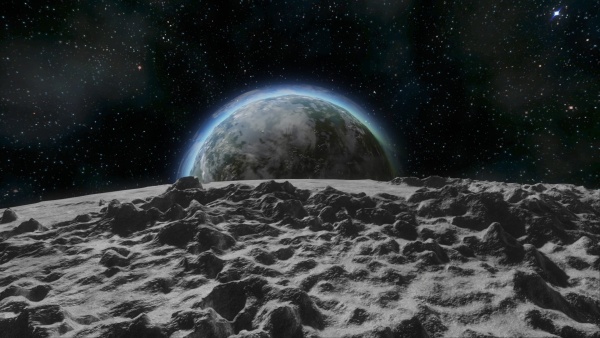Difference between revisions of "Moon"
(added image) |
(added information from planets page since they're nearly similar. reworded to fit criteria) |
||
| Line 2: | Line 2: | ||
{{stub}} | {{stub}} | ||
== Overview == | == Overview == | ||
| − | < | + | {{PAGENAME}}s are destructible voxel objects with their own [[Gravity]] field, atmosphere, possible vegetation, and hostile life. They are similar to [[Asteroid]]s in that they're fully destructible voxels, and have randomly generated [[Ore]]s but that's where their similarities end. {{PAGENAME}}s range in size from <code>19km</code> to <code>38km</code>, however they can be [[Planet]] sized <code>120km</code> in diameter ''(only if spawned in manually)''. By default, each moon is accompanied by a [[Planet]], unless manually spawned in by a player. {{PAGENAME}}s and planets are exactly the same objects technically and are very similar in practice, with a few key differences being: Moons are much smaller often only 38 km in diameter and possess much weaker gravitational fields - down to 0.25 G. |
| − | + | Much like [[Asteroid]]s they are completely immobile and never will move no matter how much force is applied, and are themselves not in anyway affected by gravity. If two planets were spawned very close to each other inside both of their gravitational fields, niether of them would ever fall into each other and meet. Although objects would experience some very strange gravitational effects from both of them. | |
| − | |||
| − | |||
| − | |||
| − | |||
== Moon Variants == | == Moon Variants == | ||
Revision as of 10:13, 19 March 2016

Contents
Overview
Moons are destructible voxel objects with their own Gravity field, atmosphere, possible vegetation, and hostile life. They are similar to Asteroids in that they're fully destructible voxels, and have randomly generated Ores but that's where their similarities end. Moons range in size from 19km to 38km, however they can be Planet sized 120km in diameter (only if spawned in manually). By default, each moon is accompanied by a Planet, unless manually spawned in by a player. Moons and planets are exactly the same objects technically and are very similar in practice, with a few key differences being: Moons are much smaller often only 38 km in diameter and possess much weaker gravitational fields - down to 0.25 G.
Much like Asteroids they are completely immobile and never will move no matter how much force is applied, and are themselves not in anyway affected by gravity. If two planets were spawned very close to each other inside both of their gravitational fields, niether of them would ever fall into each other and meet. Although objects would experience some very strange gravitational effects from both of them.
Moon Variants
<Explanation of moons having different types>
Earth-Like Moon
<Summary here>
Europa
<Summary here>
Titan
<Summary here>
Natural Gravity
<A general explanation of how moon gravity and its effects work. Heavily detailed information about natural gravity should go into the link below>
Thruster Behavior
<Explanation on how natural gravity changes the behavior of Ion thrusters and how they differ from Atmosphere ones>
 This article is a
This article is a